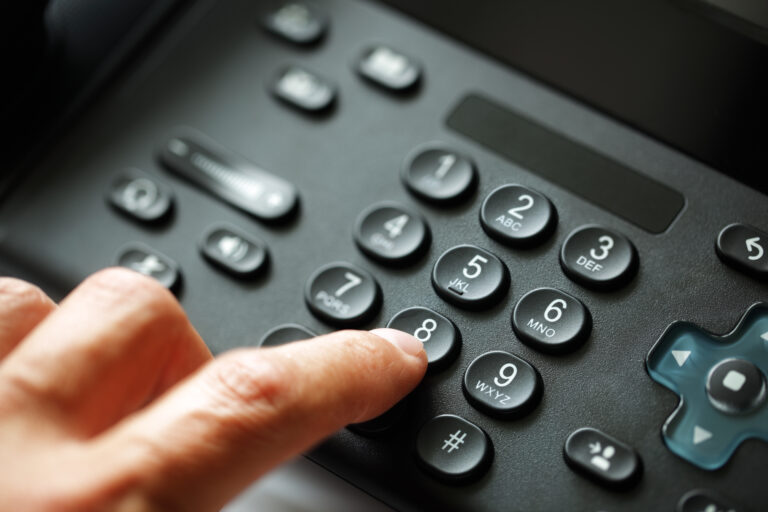Sending sensitive documents or contracts across borders is risk-prone. But with international faxing, you can confidently send important information knowing the transmission security is top-level.
Even so, the complexities of country codes and dialing prefixes make faxing internationally somewhat daunting. The expenses, security risks, and fear of unsuccessful transmission only add to the stress.
But this shouldn’t be the case. By following three best practices, you can send all your international faxes seamlessly, efficiently, and error-free. Best of all, you can use MetroFax to reliably send faxes around the world.
Read on and learn the best practices to observe when sending an international fax.
How Is the Faxing Process Different When Done Internationally?
Sending a fax to a recipient in your same country is straightforward, as you won’t need to add a prefix to the fax number or worry over other technicalities.
When it comes to faxing internationally, however, there are a few things you need to know to guarantee a successful delivery. Here are some key differences between domestic and international faxing.
Country Codes and Dialing Prefixes
When sending a domestic fax with MetroFax, you dial the recipient’s phone number plus the country code. When sending an international fax you must add the recipient’s country code and include any necessary dialing prefixes.
The country code is usually a series of digits identifying the recipient’s country. Dialing prefixes are added numbers required to connect the call, such as international access or area codes.
For example, if you were sending a fax from the U.S. to France, you’d dial the international access code (011), the country code for France (33), and the recipient’s fax number (7123456 for illustration). The complete dialing sequence would be 011337123456.
Remember, country codes and dialing prefixes often vary depending on your recipient’s country. You’ll want to verify the codes with your recipient before sending an international fax.
Technical Requirements
In addition to codes and prefixes, international faxes involve more technical aspects than domestic faxes. For example, international faxes have specific fax transmission protocols such as:
- ITU-T Group 3: This is the most common protocol today. It supports transmission speeds of up to 14,400 bits per second (bps) and is compatible with most fax machines and online faxing services.
- ITU-T Group 4: This is a newer, faster protocol that supports speeds of up to 64,000 bps. It’s typically used in high-volume commercial fax applications.
These protocols were developed by the International Telecommunication Union to define how fax data is transmitted over phone lines.
Most fax machines and services will automatically use the appropriate protocol based on the recipient’s fax machine tech capacity. Still, a basic understanding of these protocols can be helpful in troubleshooting issues related to transmission speeds or compatibility between fax machines and online faxing services.
Country Formatting Requirements
It’s essential to understand a country’s fax formatting requirements. Countries usually have different formatting requirements for faxes, such as:
- Allowable paper sizes
- Image resolution you can use
- Number of pages allowed per fax
If you don’t follow these guidelines, your fax won’t go through, so it’s important to understand any requirements upfront.
Three International Faxing Best Practices To Follow
To fax internationally without failed transmissions, stick to these three best practices.
1. Ensure That You’re Using the Correct International Code
The first step to sending a successful international fax is knowing the right country code to use. You must enter it correctly to avoid unsuccessful attempts or deliveries to the wrong destination.
To find the correct list of country codes, reference credible sources such as:
- Online directories
- Fax service provider websites
- Your fax machine manual
- Contact the recipient directly for the country code
Once you know the code, double-check that you’re not leaving any digits out, adding extra numbers, omitting international prefixes, or misentering numbers. For example, if you mistake France’s country code (+33) with Spain’s country code (+34), you’ll send the fax to the wrong destination.
2. Double Check for Proper Formatting
Make sure you’re including the correct country code, dialing prefix, and local number. When you enter the fax number, add the international dialing prefix and country code before the local number. You’ll also want to remove any leading zeros from the local fax number.
3. Check With the Recipient to Ensure That All Pages Were Transmitted
Delays can happen when sending faxes internationally. Because of this, you’ll want to reach out to your recipient to confirm they’ve received everything in a legible format. If there are any transmission issues, resend the missing pages or the entire document.
Is International Faxing Safe?
International faxing is a safe way to send information, but it’s not without risks:
- If a fax is sent over an unsecured telephone line, a third party can intercept the documents during transmission. Make sure your items are encrypted to make it harder for hackers to access your information if they intercept your fax. Using a reliable and reputable faxing provider like MetroFax makes it faster and safer to deliver information.
- Another risk is the likelihood of transmission errors resulting in lost or incomplete documents. If you’re not using the right country code, or if you haven’t properly formatted your items, they might not reach the recipient.
Overall, though, faxing internationally is a safe option. By taking the necessary precautions — such as using trustworthy fax providers, encrypting documents, and verifying you’ve satisfied the technical requirements — you safeguard the security of your international faxes.
Send Faxes To Over 170 International Destinations With MetroFax
Nobody wants to deal with failed faxes, especially when dealing with sensitive business documents or personal information.
Online fax service providers simplify the faxing process and minimize errors when faxing internationally. With MetroFax, you can send faxes to over 170 international destinations. Our online fax service lets you customize cover pages for your faxes, add up to 10 attachments per fax, and fax photos and scanned documents.
Whether you’re using your phone or a computer, you can send and receive international faxes by email, website, or app — no fax machine required.
Don’t lose sleep worrying over international faxing. Try MetroFax today and enjoy reliable and convenient online fax solutions and plans.
FAQs
How do you send an international fax?
To send an international fax, include the country code for the country that your recipient is located in, as well as any necessary dialing prefixes. Note that dialing prefixes may vary, but often include international access codes or area codes. For instance, if you want to send an international fax from the U.S. to France, you need to first dial the international access code (011), followed by the country code for France (33), then the recipient’s fax number.
Can I receive a fax in the U.S. from overseas?
Yes, you can receive a fax in the U.S. from overseas. The person sending the fax will need to include the U.S. country code, which is 1. They will also need to know your local area code.
Does faxing still work internationally?
Yes, faxing does work internationally. In fact, faxing from an international destination works in the same way as faxing from within the U.S. To send a fax internationally, you’ll need to include the country code for the country where the recipient is located. You’ll also need to include any other necessary dialing prefixes, such as the international access code or area codes.


